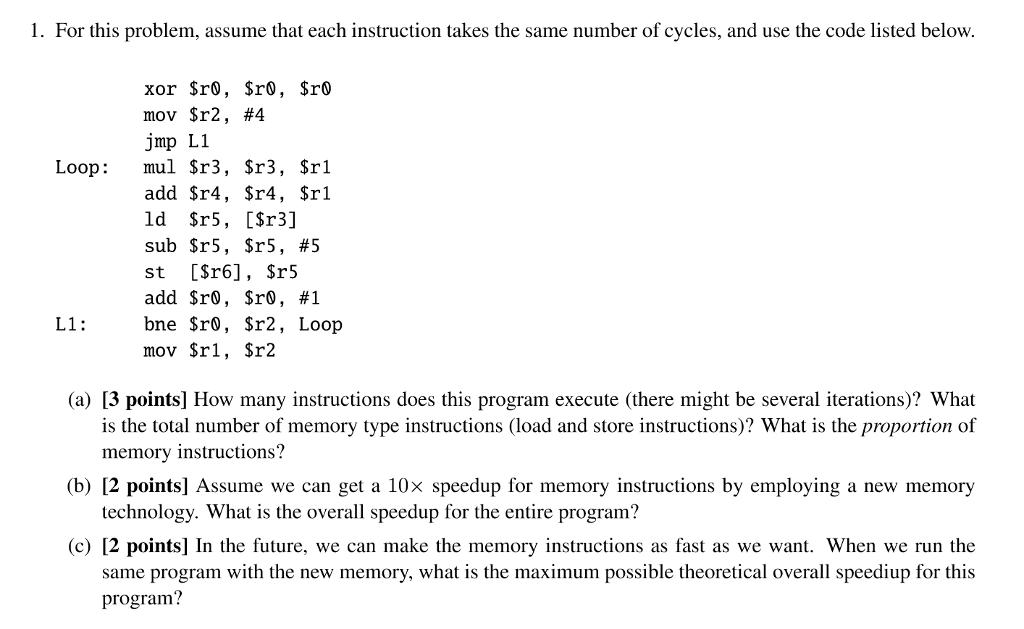Answered step by step
Verified Expert Solution
Question
1 Approved Answer
1. For this problem, assume that each instruction takes the same number of cycles, and use the code listed below. Loop: xor $r0, $r0,

1. For this problem, assume that each instruction takes the same number of cycles, and use the code listed below. Loop: xor $r0, $r0, $r0 mov $r2, #4 jmp L1 mul $r3, $r3, $r1 add $r4, $r4, $r1 ld $r5, [$r3] sub $r5, $r5, #35 st [$r6], $r5 add $r0, $r0, #31 L1: bne $r0, $r2, Loop mov $r1, $r2 (a) [3 points] How many instructions does this program execute (there might be several iterations)? What is the total number of memory type instructions (load and store instructions)? What is the proportion of memory instructions? (b) [2 points] Assume we can get a 10 speedup for memory instructions by employing a new memory technology. What is the overall speedup for the entire program? (c) [2 points] In the future, we can make the memory instructions as fast as we want. When we run the same program with the new memory, what is the maximum possible theoretical overall speediup for this program?
Step by Step Solution
There are 3 Steps involved in it
Step: 1

Get Instant Access to Expert-Tailored Solutions
See step-by-step solutions with expert insights and AI powered tools for academic success
Step: 2

Step: 3

Ace Your Homework with AI
Get the answers you need in no time with our AI-driven, step-by-step assistance
Get Started


